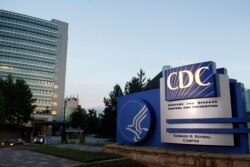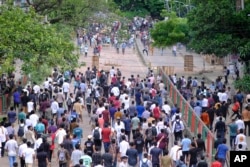Student Union
Neurological, Cardiac Issues Linger in COVID-19 Youth
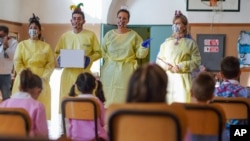
Young people have suffered less under the COVID-19 virus than older people medically, but experts say the gap has narrowed, and so-called superspreading among the young is a factor.
“The epidemic is changing. People in their 20s, 30s and 40s are increasingly driving its spread,” said Dr. Takeshi Kasai, World Health Organization regional director for the Western Pacific, in a virtual press conference Aug. 18.
“Many are unaware they’re infected — with very mild symptoms or none at all. This can result in them unknowingly passing on the virus to others,” he added.
But on Sept. 28, a 19-year-old college student died, apparently of neurological complications related to the coronavirus.
Chad Dorrill, a sophomore at Appalachian State University in Boone, North Carolina, was diagnosed with COVID-19 in early September and suffered from later complications.
Dorrill developed additional complications even after being cleared by his doctor to return to Boone from his home county, according to an announcement from Appalachian State University Chancellor Sheri Everts.
“All of us must remain vigilant with our safety behaviors wherever we are in our community. We must flatten the curve, but to do so, we must persevere,” Everts said.
Research published Sept. 23 from the Centers for Disease Control and Prevention (CDC) in Atlanta reports that the COVID-19 incidence was highest in adults ages 20 to 29 years during June to August 2020 in the United States.
The report states that “younger adults likely contribute to community transmission of COVID-19,” and that increases in positive test results among adults ages 20 to 39 preceded increases among those 60 and older by an average of 8.7 days across the southern United States in June 2020.
As of Oct. 5, the 18-to-29 age group led all positive cases in the United States with 23.7%, or 1,269,397 cases, according to CDC data. The 50-to-64 age group followed in second with 20.6% of positive cases, or 1,000,476 cases.
Research shows that the coronavirus carries long-term health implications, even in younger adults.
A multistate telephone survey of adults who had symptoms and tested positive for COVID-19 showed 35% had not returned to their usual state of health when interviewed two to three weeks after testing, according to a report by the CDC.
Twenty percent of 18-to-34-year-olds with no chronic medical conditions reported they had not returned to their usual state of health.
A study published this month in the Journal of the American Heart Association found that pediatric patients 18 and younger with acute or prior coronavirus infection can have a broad range of cardiac findings, even though they are experiencing mild symptoms.
While data show that cases were the highest among older adults in the early stages of the pandemic, German epidemiologist Karl Lauterbach suggested in April, when the pandemic was widespread in China and Italy, that thousands of young people may have helped seed the COVID-19 pandemic since last December.
“Experience maybe believes that it’s a severe disease for older people,” Lauterbach told VOA in March. “But we now know that many of the younger people also get severely ill and may sustain long-term consequences.”
“They get a very severe and atypical pneumonia and may end up in the [intensive care unit],” Lauterbach, a scientist and member of Germany’s Bundestag Parliament, said. “And they have way more severe disease than we initially believed.”
In December 2019, as COVID-19 was emerging in China, colleges and universities worldwide released hundreds of thousands of students home for winter break. Many of the more than 360,000 Chinese students who study in the U.S. returned to China for the holiday.
A month later, they and other international students returned to their campuses in the U.S. and around the world as COVID-19 was gaining speed.
In March, U.S. colleges and universities began their spring breaks, times when students traditionally head to warm beach destinations, such as in Florida, Texas and Mexico, to blow off steam after studying for midterms.
Dr. Sean O’Leary, associate professor of pediatrics-infectious diseases at the University of Colorado Anschutz Medical Campus, told VOA that in response to the wave of COVID-19 cases in the U.S., many universities shut down their campuses, sent students home or asked them to return from spring break to clean out their rooms, and then put them on airplanes for points around the country.
“From the perspective of the U.S. as a country, was that the best choice?” O’Leary asked. Campuses were “one place where we knew there was widespread transmission.”
Lauterbach said the disease is insidious in younger people because they typically show only mild or no symptoms, and scientists now believe that 80% of COVID-19 transmission occurs among those who don’t seem ill.
A study by the American Academy of Pediatrics looked at more than 2,000 youths ages 18 and younger in China.
Doctors from Shanghai Children’s Medical Center and Shanghai Jiao Tong University School of Medicine wrote that where the virus first emerged, in Hubei province, 13% of confirmed cases had asymptomatic infection, a rate that “almost certainly understates the true rate of asymptomatic infection, since many asymptomatic children are unlikely to be tested.”
Research published Aug. 6 by JAMA Internal Medicine found that many COVID-19 patients remained asymptomatic for a prolonged period, and the viral load was similar to that of symptomatic patients.
Older children have also been shown to transmit the coronavirus as much as adults, according to a large study from South Korea.
The study, which analyzed nearly 65,000 people in South Korea, found that children younger than 10 were around half as likely to spread the virus as adults. However, young people ages 10 to 19 years old are more likely than other age groups to disperse COVID-19 into households.
Of 10,592 household contacts, 11.8% had COVID-19, with 18.6% being index patients ages 10 to 19. It was 1.9% for the 48,481 non-household contacts.
“We should make it clear to younger people that if they behave in a careless fashion, that they are not only putting themselves, their peers, older people and peers [with underlying conditions] at risk,” Lauterbach said, “but they put themselves at risk and their best friends. So, we need to convey a message that this is a serious disease for all age groups.”
“It is quite clear that not many young people die from the disease,” Lauterbach said.
“But it is astonishing that we see very, let's say, remarkable numbers of younger people in the ICU and also often on ventilator support,” he said.
“Currently, we do not know whether they will fully recover their lung function or not. We definitely do not know that for certain. So, we have to take this way more seriously than we did in the past.”
Kathleen Struck contributed to this report.
See all News Updates of the Day
Tips for first-year international students in the US
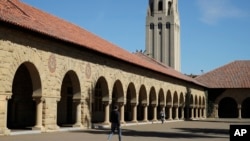
Book your flights right away, get a U.S. phone plan, make sure you have linens for your dorm and attend orientation – that’s some of the advice international students have for first-year college students coming from abroad.
U.S. News & World Report compiled helpful tips for students studying in the United States for the first time. (July 2024)
Survey: Social integration, career prep are important to international students
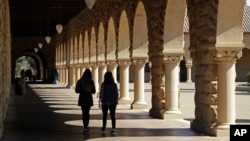
A recent survey of international students in the United States found that before starting school, they were concerned about personal safety, making friends and feeling homesick.
Inside Higher Ed reports that international students want specialized orientations, peer connections, career preparation and job placement to help make their college experiences successful. (July 2024)
US advisory council ends Nigeria visit, signs student exchange deal

Members of a U.S. presidential advisory council have approved a student exchange deal between an American college and a Nigerian university as part of the council's effort to strengthen collaboration on education, health, entrepreneurship and development between Africa and Africans living abroad.
The council also visited a health facility supported by the United States Agency for International Development in the capital.
Nigerian authorities and visitors chatted with members of the U.S President's Advisory Council on African Diaspora Engagement as they toured a healthcare facility in Karu, a suburb of Abuja, on the last day of the council's three-day visit to Abuja and Lagos.
The facility is one of many supported by the United States Agency for International Development, or USAID, to improve the management of childhood illnesses, family planning, immunization and delivery.
The tour was part of the council's effort to promote African diaspora-led investments in technology entrepreneurship, education and healthcare delivery.
"They're doing a phenomenal job there, it really gave us a sense of what the healthcare system is in Nigeria," said Deniece Laurent-Mantey, executive director of the advisory council. "This is our first trip as a council to the continent and we chose Nigeria for a reason — the diaspora in Nigeria is very active, very influential, and they're really a source of strength when it comes to our U.S.-Africa policy. And so for us coming to Nigeria was very intentional."
The council was created by President Joe Biden in September to improve collaboration between Africa and its diaspora in terms of economic and social development.
Akila Udoji, manager of the Primary Healthcare Centre of Karu, said officials in Nigeria were pleased that the council members were able to visit.
"We're happy that they have seen what the money they have given to us to work with has been used to do, because they have been able to assist us in capacity-building, trainings, equipment supply and the makeover of the facility," Udoji said.
Earlier, the council signed a deal for a student exchange program between Spelman College in the southern U.S. city of Atlanta and Nigeria's University of Lagos.
Laurent-Mantey said education exchanges are one of the council's top priorities.
"In Lagos, we had the president of Spelman College — she's also a member of our council — she signed an agreement with the University of Lagos to further education exchange programs in STEM and creative industries between those two universities," Laurent-Mantey said. "And I think for us it's very important, because Spelman College is a historically Black university, and so here we are promoting the importance of collaboration between African Americans and Africans."
In March, the advisory council adopted its first set of recommendations for the U.S. president, including the student exchange initiative, advocating for more U.S. government support for Africa, climate-focused initiatives, and improving U.S. visa access for Africans.
The council met with Nigerian health and foreign affairs officials during the visit before leaving the country on Wednesday.
American Academy of the Arts College announces closure
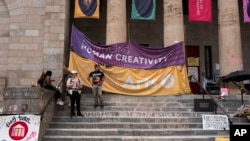
The American Academy of Art College in Chicago announced it would be closing after 101 years of preparing students for careers in art and illustration.
WTTW news reported that like other art colleges, the academy saw enrollment drop after the pandemic, and officials made the decision to close the college last month. (July 2024)
5 killed, dozens injured in clashes over Bangladesh jobs quota system
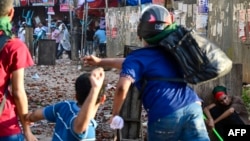
At least 5 people were killed and dozens injured in two separate incidents in Bangladesh as violence continued Tuesday on university campuses in the nation's capital and elsewhere over a government jobs quota system, local media reports said quoting officials.
At least three of the dead were students and one was a pedestrian, the media reports said. Another man who died in Dhaka remained unidentified.
The deaths were reported Tuesday after overnight violence at a public university near Bangladesh's capital, Dhaka. The violence involved members of a pro-government student body and other students, when police fired tear gas and charged the protesters with batons during the clashes, which spread at Jahangir Nagar University in Savar, outside Dhaka, according to students and authorities.
Protesters have been demanding an end to a quota reserved for family members of veterans who fought in Bangladesh's war of independence in 1971, which allows them to take up 30% of governmental jobs.
They argue that quota appointments are discriminatory and should be merit-based. Some said the current system benefits groups supporting Prime Minister Sheikh Hasina. Some Cabinet ministers criticized the protesters, saying they played on students' emotions.
The Bengali-language Prothom Alo daily newspaper reported that one person died in Dhaka and three others, including a pedestrian, were killed after they suffered injuries during violence in Chattogram, a southeastern district, on Tuesday.
Prothom Alo and other media reports also said that a 22-year-old protester died in the northern district of Rangpur.
Details of the casualties could not be confirmed immediately.
While job opportunities have expanded in Bangladesh's private sector, many find government jobs stable and lucrative. Each year, some 3,000 such jobs open up to nearly 400,000 graduates.
Hasina said Tuesday that war veterans — commonly known as "freedom fighters" — should receive the highest respect for their sacrifice in 1971 regardless of their current political ideologies.
"Abandoning the dream of their own life, leaving behind their families, parents and everything, they joined the war with whatever they had," she said during an event at her office in Dhaka.
Protesters gathered in front of the university's official residence of the vice chancellor early Tuesday when violence broke out. Demonstrators accused the Bangladesh Chhatra League, a student wing of Hasina's ruling Awami League party, of attacking their "peaceful protests." According to local media reports, police and the ruling party-backed student wing attacked the protesters.
But Abdullahil Kafi, a senior police official, told the country's leading English-language newspaper Daily Star that they fired tear gas and "blank rounds" as protesters attacked the police. He said up to 15 police officers were injured.
More than 50 people were treated at Enam Medical College Hospital near Jahangir Nagar University as the violence continued for hours, said Ali Bin Solaiman, a medical officer of the hospital. He said at least 30 of them suffered pellet wounds.
On Monday, violence also spread at Dhaka University, the country's leading public university, as clashes gripped the campus in the capital. More than 100 students were injured in the clashes, police said.
On Tuesday, protesters blocked railways and some highways across the country, and in Dhaka, they halted traffic in many areas as they vowed to continue demonstrating until the demands were met.
Local media said police forces were spread across the capital to safeguard the peace.
Swapon, a protester and student at Dhaka University who gave only his first name, said they want the "rational reformation of the quota scheme." He said that after studying for six years, if he can't find a job, "it will cause me and my family to suffer."
Protesters say they are apolitical, but leaders of the ruling parties accused the opposition of using the demonstrations for political gains.
A ruling party-backed student activist, who refused to give his name, told The Associated Press that the protesters with the help of "goons" of the opposition's Bangladesh Nationalist Party and Jamaat-e-Islami party vandalized their rooms at the student dormitories near the Curzon Hall of Dhaka University.
The family-of-the-veterans quota system was halted following a court order after mass student protests in 2018. But last month, Bangladesh's High Court nulled the decision to reinstate the system once more, angering scores of students and triggering protests.
Last week, the Supreme Court suspended the High Court's order for four weeks and the chief justice asked protesting students to return to their classes, saying the court would issue a decision in four weeks.
However, the protests have continued daily, halting traffic in Dhaka.
The quota system also reserves government jobs for women, disabled people and ethnic minority groups, but students have protested against only the veterans system.
Hasina maintained power in an election in January that was again boycotted by the country's main opposition party and its allies due to Hasina's refusal to step down and hand over power to a caretaker government to oversee the election.
Her party favors keeping the quota for the families of the 1971 war heroes after her Awami League party, under the leadership of her father, Sheikh Mujibur Rahman, led the independence war with the help of India. Rahman was assassinated along with most of his family members in a military coup in 1975.




